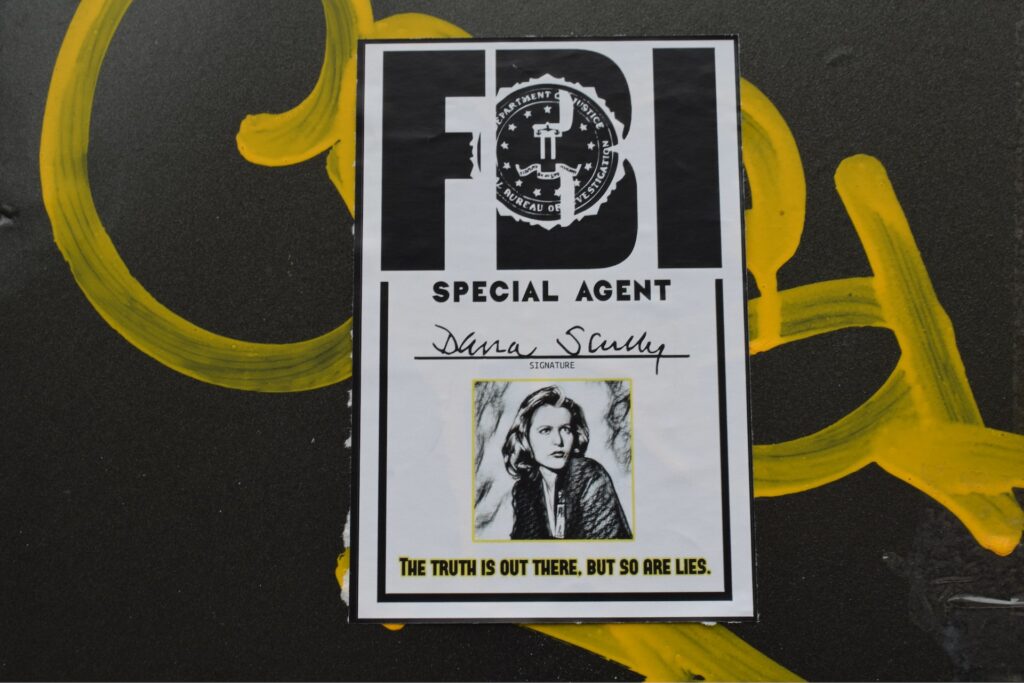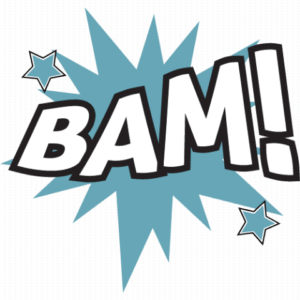Trigger warning!?! Conspiracy theory???
No. Just making the case for healthy skepticism.

An opinion piece by Bernard J. Polster
- Three Of The Biggest, Most Common Lies Ever Told! Part 1 of 2
- Three Of The Biggest, Most Common Lies Ever Told! Part 2 of 2
Common Sense, Where Are You?
I really thought that most people had some common sense. I really thought that the mature, smart, and or, educated people would have some healthy skepticism. What happened to healthy skepticism, anyway? These days, it feels like far too many people take what is being said and told to them at face value.
The Headlines Have Become Our Truth.
The source of the information seems to have no relevance. People believe what they want to believe regardless of where information comes from.
What happened to healthy skepticism?
What is healthy skepticism?
First, what is skepticism?
“Doubt that something is true or useful”.
https://dictionary.cambridge.org/dictionary/english/skepticism
However, we need to be careful!
We can be too skeptical where we do not believe anything at all. Full on and only skepticism is not the best answer. We look for the balance that can come with healthy skepticism.
So then, what is “healthy skepticism”?
We can say that healthy skepticism is having and even starting with doubts but then willing to be able to do some research to see if what we doubt is, in fact, true or not. And only then, making up our own mind about something. And, also, having the ability to be willing to change our mind when new facts are presented that may contradict our current views. So, even though, we may believe something to be true, or useful, we also keep in the back of our mind, the thought that what we “know” now, what we consider to be “true” today, may not be true or useful tomorrow.
Simply put, having a healthy skepticism means that we are open to seeking the truth and adjusting accordingly, if new truths are presented or found out to us.
The point is that having an open mind is critical to thinking critically.
Jumping around social media it still shocks me how many people just do not seem to want to listen to reason. So many people just do not want to even hear points of information from a side or source that does not agree with their own opinion.
It seems that people only believe what they want to believe and are not open to different opinions or ideas. We “trust” what we “know” and are not willing to budge from our “knowledge”.
This is not healthy.
There used to be (at least) three lies that we all knew and accepted as truisms, albeit, in reverse. Sure, there is some humor with them, but most people were accepting that these three were lies, or at least, not as true as they claim or would hope them to be. No one doubted that they were mostly lies, or at least what they refer to, should be taken with a grain of salt.
The three lies that we could say that, it is, in fact, the opposite to be true:
- “The check (cheque) is in the mail”.
- “I am from the government, and I am here to help you”.
- This third one is a little racy. I won’t fully list it here, but let’s just say that it has to do with the male sex organ, a person’s mouth and what happens at the end of the act… And saying that the end will not happen… You should get the idea.
Anyway. In making the case for healthy skepticism, we can leave number three out of this polite discussion.
So then, on to the first two Big Lies!.
Number One: “The Check Is In The Mail”.
Who uses checks anymore? This may be a big problem for our new and modern society. This simple issue maybe the root cause of people’s lack of skepticism. With so many easy to use apps and electronic ways to transfer or send money to other people, we have forgotten what it was like to receive funds and to be paid with a paper check.
Does anyone even remember writing a check out for a payment? First of all, you had to have checks in your checkbook. Remember checkbooks? You had to order them and wait for them to arrive to you in the mail. Snail mail. Delivered by the postman. It took some time. But at least you had cool designs to choose from. You know, your own personal taste and individuality mattered a bit. It was like selecting skins for paper checks!
Okay, so you have your checkbook. Then, you had to write out the check. What?!? Yes. Write. You had to write, with a pen, the name of the person or company that you wanted to pay. And!!!! You had to write out, in words, the numbers of the amount that you wanted to pay. Can you imagine? And once done all of that, of course, you had to sign your name to the check.
Brace yourself: Spelling mattered. And there was not any spell-check or autofill features available when writing a check. You had to know how to spell. If you were not sure, you could ask someone, or you could use an old archaic book, called a dictionary.
The person that you paid, the “payee”, would then need to take the check to their bank branch (When was the last time you were in your bank branch?) and deposit the check to their account with the help of the bank teller. Then, it took a few days, yes days, for the check to clear and the funds to actually become available in your bank account.
Certified Checks For Protection!
Banks even provided a service whereby a check was certified. This meant that the bank that the payor used for their checking account could confirm and verify that there were sufficient funds in the payors bank account to cover the check. The bank would earmark the funds in the payors account for the check to be cashed.
Basically, even though the check was not yet cashed or deposited by the payee, the funds were deducted from the payors account, so that other deductions from the account would not deplete the account to the point that there were not enough funds to cover the check. More on this below.
How did you get the checks to your payees? Well, you could have hand delivered them. Or, as was a common practice, you mailed checks to the recipient, corporate or personal. More writing! More snail mail. And you had to lick a stamp. Gross!
And this is where the saying, or lie, came from.
If you owed someone some money and they called you to ask about the payment, the common reply was to say that, “Oh! The check is in the mail”. I want to believe that most of us were honest when we said this. That we had actually written the check, placed it in the envelope and sent it off through the postal service, but…
Even for the most honest of us, there were times that we were busy and forgot, so we told the little “white lie” to cover ourselves. Then most of us would write up the check and send it off at the first chance we could. Saying that the check was in the mail was usually just a nice way to say that we forgot to write and send the check, without incriminating ourselves. The recipient, knowing that it was a white lie, still, accepted the statement and patiently waited a few more days for the check to arrive in the mail.
But there were, there still are, people that would take advantage of the time it takes for a check to get through the mail service. There were people that were malicious in their use of the statement, “the check is in the mail”. In fact, some people never sent the check, at all.
And so, a healthy skepticism existed when it came to receiving payments by check. People knew that there was some risk involved with being paid by check. Because not only did we have to wait for the check to arrive, if when the payee went to cash or deposit the check, and the funds were not available in the payors account, the check would bounce! A bounced check was usually caused by the payors account having insufficient funds, otherwise known as, ”NSF”, Not Sufficient Funds, to cover the amount of the check.
NSF checks opened a whole new kettle of worms with notices and calls from your bank and, not to mention the fees that your bank charged you for the payors error, oversite, or malicious intent.
Note that knowingly writing a bad check can be considered to be a crime. It is against the law and the punishment for passing bad checks can vary with the amount, the number of times, and intent. But know that in the USA, at some point, passing bad checks can be a felony offense.
More on checks and bad checks in the USA, here
https://www.investopedia.com/terms/b/bad-check.asp
https://legalbeagle.com/5313337-federal-bad-check-laws.html
Today, with smartphones and payment apps, writing checks and bounced checks seems to be and ancient and archaic ritual from our past. The availably and ease of paying someone on time and almost immediately is a great modern convenience. But has it become too easy and too simple for own good and well-being?
When someone pays us electrotonically we get the payment notification almost immediately. We can rest easy and be assured that the funds will make it into our account, usually, by the end of the same business day that the payment was made. Wonderful! Hooray for technology!
But with these great electronic money transfer services, have we given up on being vigilant and aware? Have we become too trusting and accepting of what people tell us?
Why So Much About Writing a Check?
In putting our trust in technology, we may have extended our explicit trust to people as well. No need to wait for the check in the mail. No more bounced checks, so nothing to worry about. We can have faith and trust in one another, in our fellow humans. And so, because of this, it seems a reason why there is no need to maintain, even a small amount, of healthy skepticism. Nice. Good for humanity. But really, maybe, not so good foreach one us.
All that is written here was to break out the steps so they are seen and to remind people that we need to be aware of the pitfalls that can show up in our lives.
Sure, it is okay to trust people, mostly. But not blindly.
How does the old saying go?
“Fool me once, shame on you. Fool me twice, shame on me.”
In a nutshell, it is about personal responsibility. Your own personal responsibility.
End of Part 1.
Be a Healthy Skeptic.
BAM!!! Be A Man! Do The Right Thing.
Be the DtRTy Guy!
